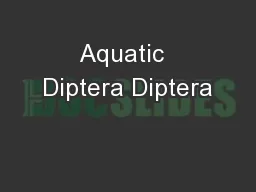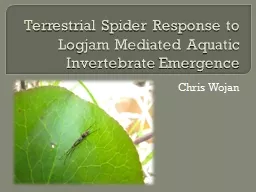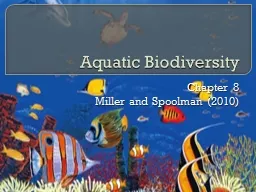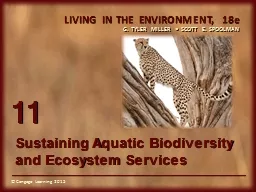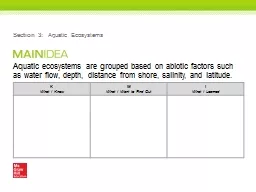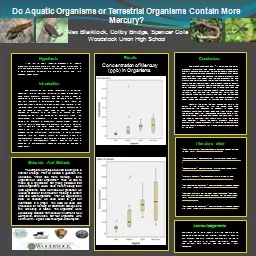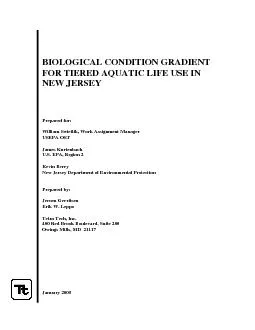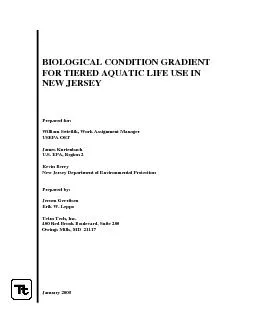PPT-Aquatic Diptera Diptera
Author : liane-varnes | Published Date : 2018-10-23
flies Almost 120000 spp worldwide 51197 spp worldwide are aquatic or semiaquatic 17000 spp in 2222 genn in 108 famm in North America 6081 spp in 495 genn
Presentation Embed Code
Download Presentation
Download Presentation The PPT/PDF document "Aquatic Diptera Diptera" is the property of its rightful owner. Permission is granted to download and print the materials on this website for personal, non-commercial use only, and to display it on your personal computer provided you do not modify the materials and that you retain all copyright notices contained in the materials. By downloading content from our website, you accept the terms of this agreement.
Aquatic Diptera Diptera: Transcript
Download Rules Of Document
"Aquatic Diptera Diptera"The content belongs to its owner. You may download and print it for personal use, without modification, and keep all copyright notices. By downloading, you agree to these terms.
Related Documents

